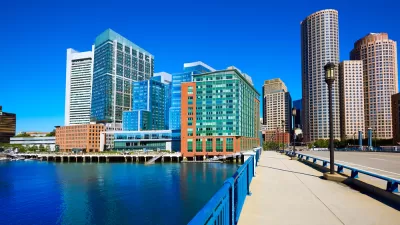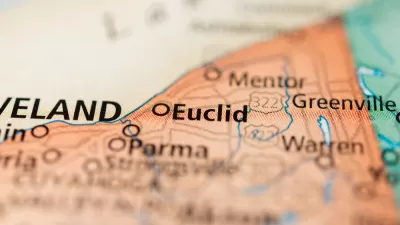Boston would hardly seem capable of resembling "Anytown, USA" but that might be precisely what's happening in the Seaport neighborhood of the city's waterfront.

The list of large investments in the South Boston Waterfront over the past three decades is impressive. An article by Jon Chesto begins by noting all the changes "The cleanup of the harbor. The vast convention center. The Big Dig. And then, after the Great Recession, all the construction, and the new offices it brought."
Yet Chesto also notes that some, like local resident Valerie Burns, have noticed something is still missing: "There are no schools, no library. It’s hard to find a place to play soccer or baseball. And the biggest problem Burns sees? There simply aren’t enough neighbors."
It's true that the area currently has 2,000 housing units—"nearly double the amount that existed five years ago"—with more on the way. Yet "longstanding questions remain about the role housing plays in the city’s waterfront evolution," writes Chesto.
The article provides a lot more detail about the legacy of planning efforts for the area, and how development so far has succeeded, or failed, its expectations for the area.
FULL STORY: Some residents worry Seaport will lack neighborhood feel

Study: Maui’s Plan to Convert Vacation Rentals to Long-Term Housing Could Cause Nearly $1 Billion Economic Loss
The plan would reduce visitor accommodation by 25,% resulting in 1,900 jobs lost.

North Texas Transit Leaders Tout Benefits of TOD for Growing Region
At a summit focused on transit-oriented development, policymakers discussed how North Texas’ expanded light rail system can serve as a tool for economic growth.

Why Should We Subsidize Public Transportation?
Many public transit agencies face financial stress due to rising costs, declining fare revenue, and declining subsidies. Transit advocates must provide a strong business case for increasing public transit funding.

How to Make US Trains Faster
Changes to boarding platforms and a switch to electric trains could improve U.S. passenger rail service without the added cost of high-speed rail.

Columbia’s Revitalized ‘Loop’ Is a Hub for Local Entrepreneurs
A focus on small businesses is helping a commercial corridor in Columbia, Missouri thrive.

Invasive Insect Threatens Minnesota’s Ash Forests
The Emerald Ash Borer is a rapidly spreading invasive pest threatening Minnesota’s ash trees, and homeowners are encouraged to plant diverse replacement species, avoid moving ash firewood, and monitor for signs of infestation.
Urban Design for Planners 1: Software Tools
This six-course series explores essential urban design concepts using open source software and equips planners with the tools they need to participate fully in the urban design process.
Planning for Universal Design
Learn the tools for implementing Universal Design in planning regulations.
Ascent Environmental
Borough of Carlisle
Institute for Housing and Urban Development Studies (IHS)
City of Grandview
Harvard GSD Executive Education
Toledo-Lucas County Plan Commissions
Salt Lake City
NYU Wagner Graduate School of Public Service




























